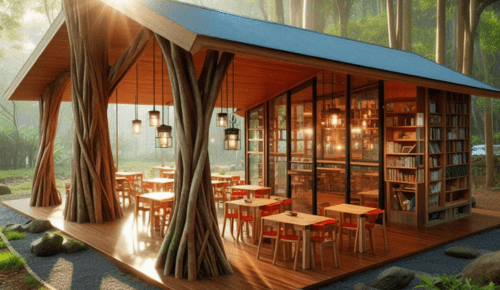In today’s world, education is evolving beyond the traditional four walls of a classroom. More schools, universities, and learning institutions are embracing outdoor learning spaces to enhance student engagement, improve well-being, and create a dynamic environment for education. Outdoor classrooms and shelters are becoming essential assets for schools looking to provide a versatile and inspiring space for students of all ages.
Why Are Outdoor Learning Spaces Gaining Popularity?
There are several reasons why outdoor learning has gained momentum. First, exposure to fresh air and natural surroundings has been linked to improved concentration and mental health in students. Studies show that learning outdoors can reduce stress and anxiety while increasing overall student enthusiasm for education.
Additionally, schools are seeking cost-effective ways to expand their space without investing in expensive building renovations. Outdoor classrooms provide a practical solution by offering a designated learning area that can be used year-round. Whether it’s for science experiments, art classes, or simple group discussions, these spaces foster creativity and interaction in a way that indoor classrooms cannot always achieve.
Types of Outdoor Classrooms and Shelters
The design of outdoor learning environments varies based on the needs of the institution. Some of the most common types include:
- Wooden or Steel-Framed Shelters – These provide shade and protection from rain, allowing teachers to conduct lessons outside regardless of the weather.
- Pergolas & Gazebos – Ideal for schools that want a more aesthetically pleasing outdoor space, these structures offer partial coverage while maintaining a natural feel.
- Open-Air Canopies – These lightweight, modular designs are perfect for schools looking for quick and flexible installation.
- Enclosed Outdoor Classrooms – Equipped with transparent walls or screens, these structures provide a balance between indoor and outdoor learning, keeping students sheltered while still experiencing nature.
Benefits Beyond Learning
While the primary goal of these spaces is to improve education, they also serve other valuable functions. Outdoor shelters can double as gathering areas for school events, extracurricular activities, and even community meetings. They can be used for lunch breaks, reading corners, or mindfulness and relaxation sessions. Some schools even integrate sustainability elements, such as solar panels or rainwater collection systems, to teach students about environmental responsibility.
Additionally, outdoor classrooms contribute to healthier lifestyles by encouraging physical activity. Instead of sitting at desks for long hours, students have the freedom to move around, engage in hands-on learning, and enjoy a more interactive education experience.
Finding the Right Solution
If your school or institution is considering investing in outdoor classrooms & shelters, it’s essential to choose a design that meets your specific needs. Factors like climate, space availability, and the type of lessons conducted will determine the best option. With the right setup, outdoor learning can transform the educational experience and create a positive, lasting impact on students and educators alike.
As education continues to evolve, embracing outdoor learning is a step toward a healthier, more engaging, and forward-thinking approach to teaching. Whether you need a small shelter for occasional outdoor classes or a fully equipped space for year-round learning, the possibilities are endless.

